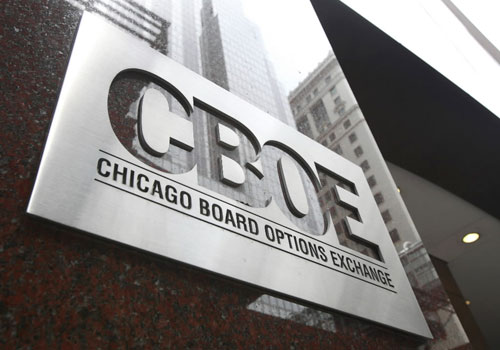TECH TUESDAY is a weekly content series covering all aspects of capital markets technology. TECH TUESDAY is produced in collaboration with Nasdaq.
Artificial intelligence (AI), specifically generative AI, has perhaps been the hottest emerging technology topic in markets of late. Traders Magazine caught up with Mike O’Rourke, Head of AI and Emerging Technology at Nasdaq, to learn more about the current AI landscape and how it will evolve.
Tell us about your background and your current role at Nasdaq.
I’ve been with Nasdaq for 25 years, the last 10 of which have been primarily focused on emerging technologies—AI, data science and our move to the cloud.

Back in 2016, I ran our data business technology; we were doing a lot of data science, but there was no formal data science program at Nasdaq. So, we built out a whole career track as well as a center of excellence for AI because, at the time, Brad Peterson, Chief Technology, and Information Officer at Nasdaq, and I anticipated that this was going to be very important. We wanted to start building up talent, a skill set and prowess in AI.
When did Nasdaq start using AI, and what were the early use cases?
The early projects at that time focused on using machine learning and AI language models to understand data and make new alternative data sets. How can we use AI to process unstructured data and convert it into structured data and knowledge so people can make better investments and trading decisions? We also used machine learning models to better understand trading activity and behavior. Why am I not getting the fill rate that I want? Why did this order not execute? How are my trading patterns compared to other firms? Things like that.
How has Nasdaq’s cloud journey and partnership with Amazon Web Services (AWS) facilitated AI adoption?
AWS has been a wonderful partner. The cloud is really where innovations happen first, and Nasdaq took the stance that we needed to be early adopters by moving our data and systems there. It was about being agile and able to scale more easily.
Our investment in the cloud is paying off—the new emerging AI technologies are there, and because our data is there, too, we can readily implement these new models on top of our data. We’ve invested a lot in having really good data systems, and to have good AI, you need sound data, which we have in the cloud.
AI is one of our strategic pillars across the company—we want to incorporate it into all our products and services, and the cloud is a significant enabler of this.
What current AI use cases are you most excited about?
I’d be remiss if I didn’t talk about Dynamic Midpoint Extended Life Order (M-ELO), which is part of our dynamic markets program. We believe we can provide better service to our clients by having order types that can dynamically adapt to market conditions. It’s still early days for Dynamic M-ELO, but it’s been quite successful—we’re seeing increased order flow and higher hit rates, and we’re seeing no degradation in markouts. So, clients are clearly benefiting from the service.
Another part of dynamic markets is our strike optimization program, where we use machine learning models to figure out which strikes we should have listed in the options market. About 1.3 million strikes can be listed in the options market, so manually determining what strikes should be listed is difficult. We think this is a perfect use case where machines can do it better than humans.
We have several other items in the research phase, such as order types and other solutions within the dynamic markets program. We believe these two first launches are just the beginning of how AI will transform markets.
Generative AI has been a very hot topic. Do any AI use cases at Nasdaq utilize generative AI?
Broadly speaking, if there’s an investigative component anywhere within a solution set, generative AI can be very valuable.
As for specific applications, our Verafin and market surveillance solutions are rolling out automated investigators that use generative AI to make investigating illicit activities more effortless. We recently launched a feature in BoardVantage that allows us to summarize documents, which can make reviewing length board documents easier.
Beyond those examples, there are a host of new product enhancements that use generative AI. Really, anywhere there’s a user interface where people are trying to answer questions, you’re probably going to see some sort of generative chatbot interface in the near future.
What will the AI adoption we’ve been talking about mean for Nasdaq and the markets in the future?
Information can be acted upon much more quickly because generative systems can summarize data more quickly.
I’m dating myself here, but when I was a kid, if I wanted to research something, I had to go to the library—it would take me quite a long time to find the answer. With the advent of the internet, I didn’t have to drive to the library anymore. And then when mobile came out, I didn’t even have to go home to my computer. Timeframes for information access have gotten shorter and shorter—and generative AI will further compress that time.
The upshot for markets is that information will be acted upon much more quickly. This is why we think dynamic market solutions are so important.
What about generative AI raises caution flags?
Generative AI is an incredibly exciting area, but there are risks, and people need to take those risks seriously.
How are AI models built, how are they trained and where are they hosted? At Nasdaq, we focus on having excellent AI governance, where anything that goes out is looked at from a compliance, regulatory and technology perspective to ensure it’s safe, secure and scalable for clients. No AI solution goes out without a rigorous governance process to ensure that the models are effective and can be trusted.
Explainability is also critical. When we came to market with some of our dynamic market solutions, like Dynamic M-ELO, we were very transparent; in fact, we published a whole whitepaper about it. We covered questions like what features are going into the model, how the model behaves and what type of information it will use to make decisions.
Having that transparency and explainability is essential, and it’s something we value at Nasdaq.
Transparency is a core value for Nasdaq and a key part of what makes modern financial markets work so well. When it comes to generative AI at Nasdaq, transparency is equally important. Being able to explain both where information comes from and why it’s relevant is critical to ensuring generative AI is trustworthy and effective. We’re excited about what transformation opportunities generative AI can provide, and we look forward to continuing this journey of discovery.
Creating tomorrow’s markets today. Find out more about Nasdaq’s offerings to drive your business forward here.









